Budgeting, Dan and Kate King (West Coast)
13 min read
Dan and Kate King run a family farm near Reefton, Buller district, focusing on getting the most milk production from each cow at low costs. Their farm is 74 ha with 151 Friesian cross cows and all young stock on farm. The farm has about 37% of the area under pivot irrigation. With changing weather, they're adopting a cautious approach for resilience. Their management decisions include having clear goals, maintaining a low-stress profitable farm, updating budgets, and networking with peers for new ideas.
Dan and Kate King run a small family farming operation near Reefton in the Buller district, with a focus on high production per cow from low costs of production. They enjoy trying new ideas and their biggest challenge is managing the wet periods.
The farm situation is changing for the 2025-26 season so the 2024-25 season review is the final update for this case study. We would like to thank Dan and Kate for being part of the project and so generously sharing their information.
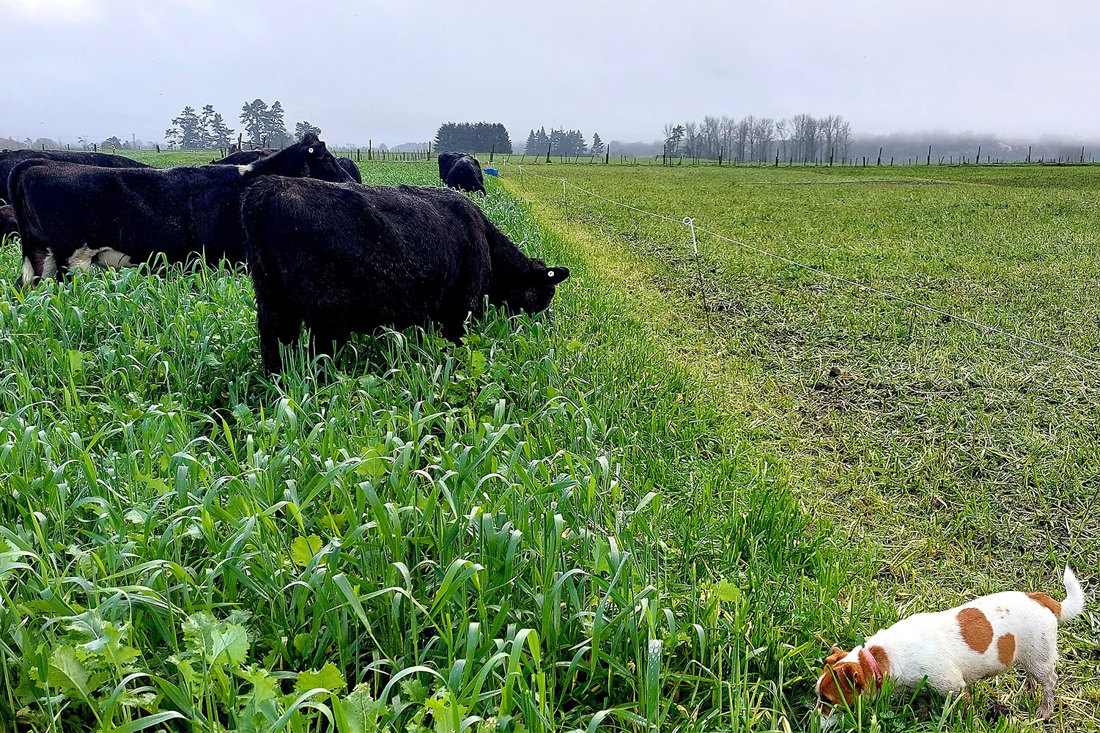
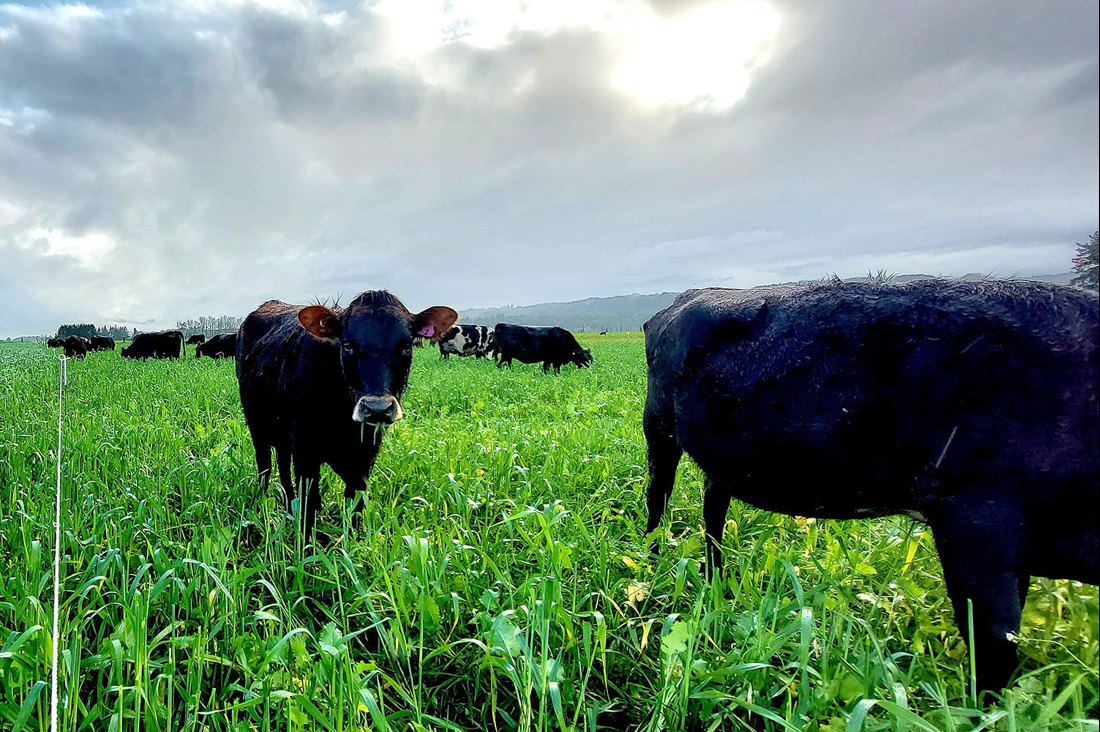
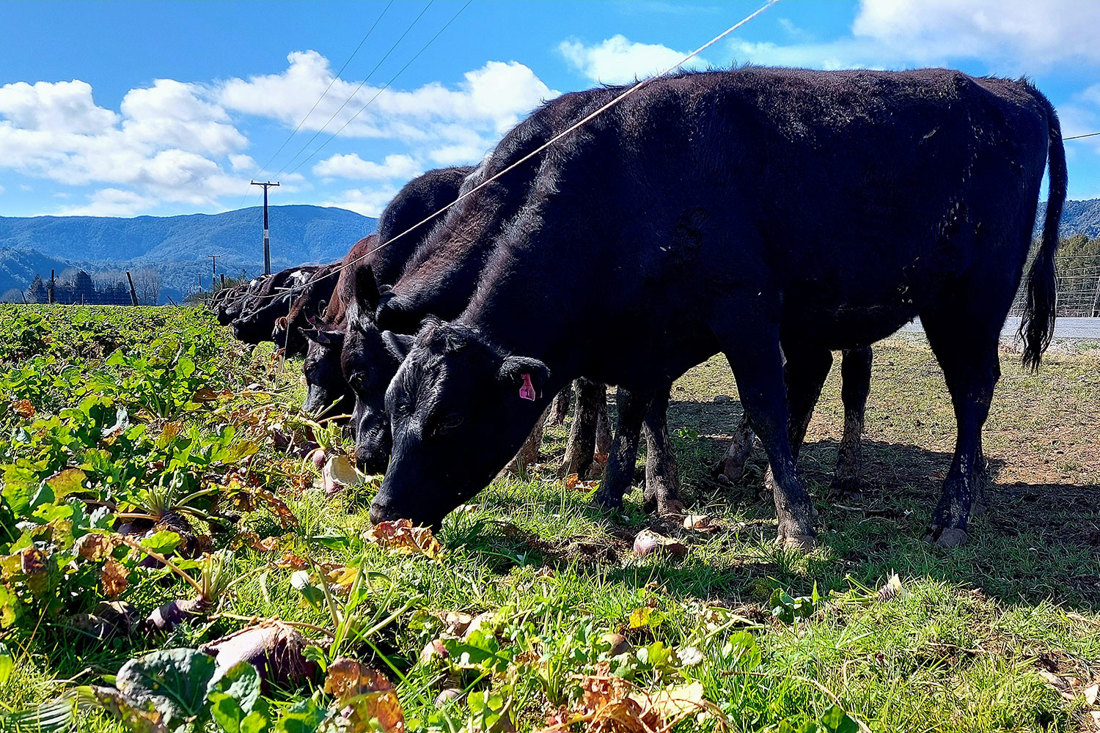
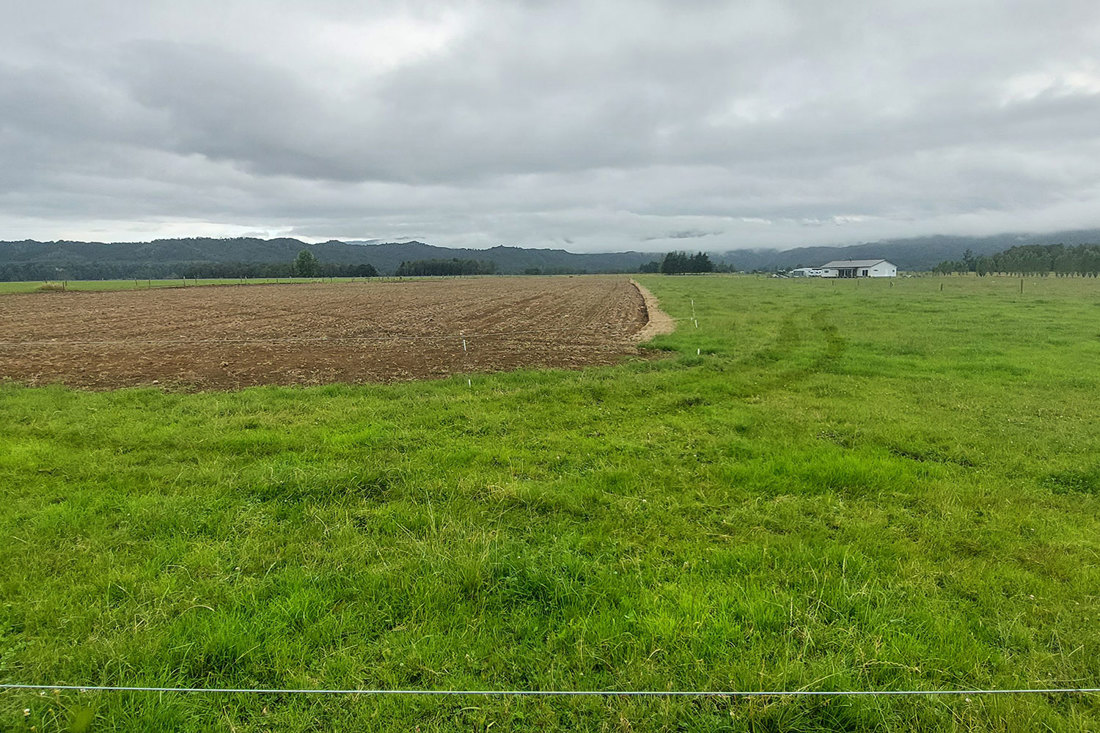

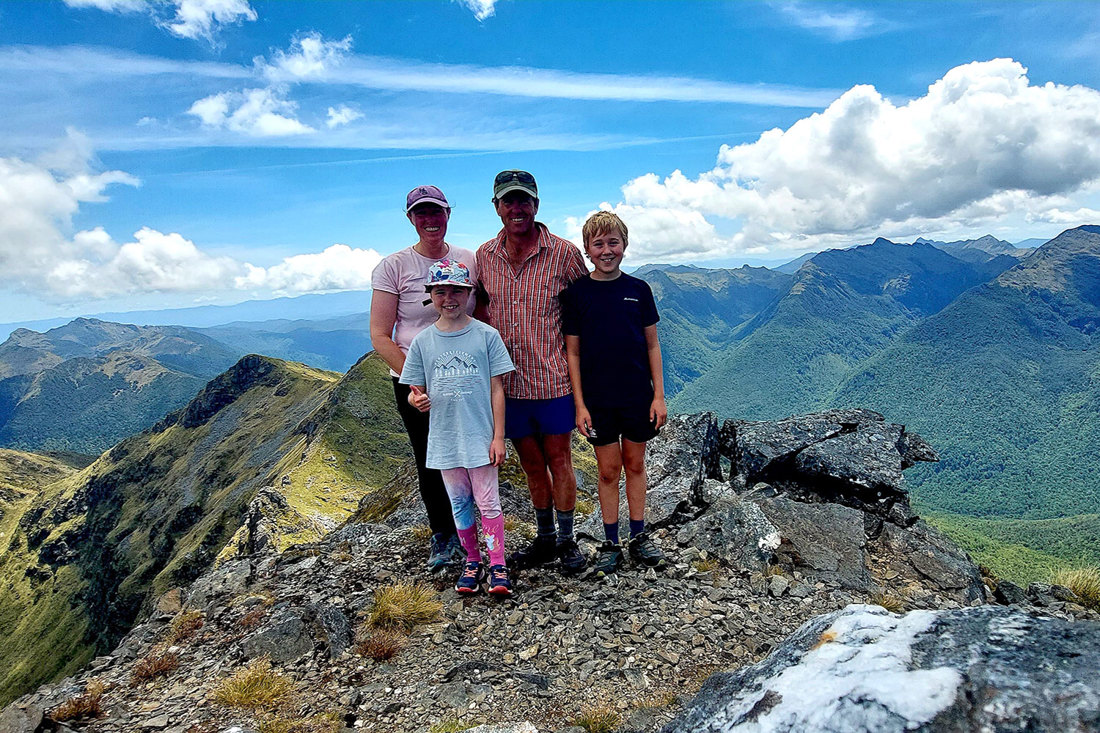
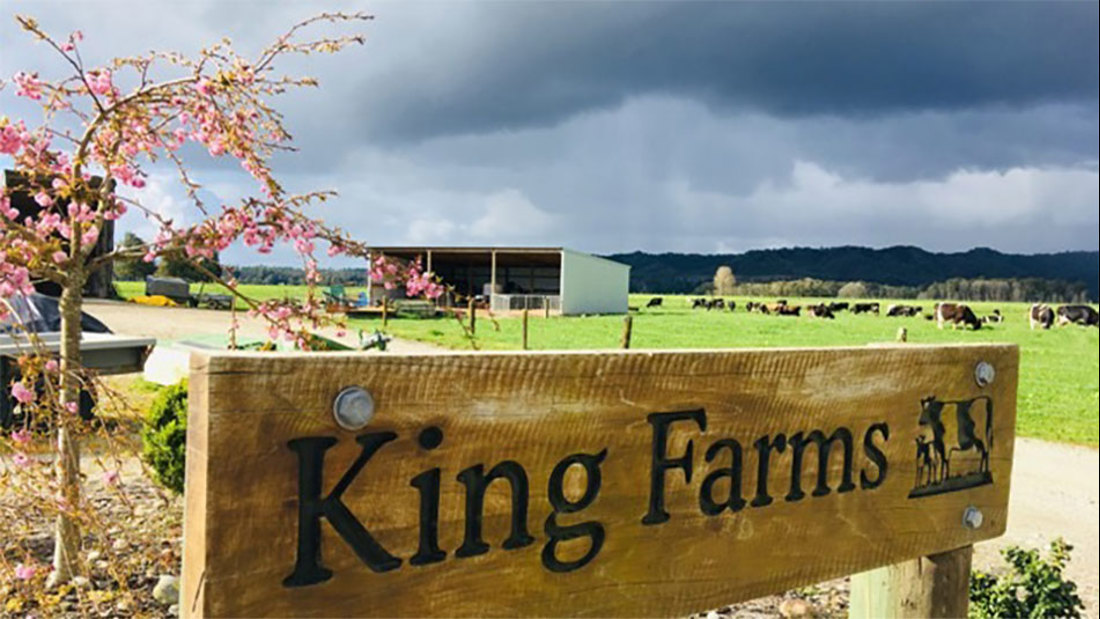
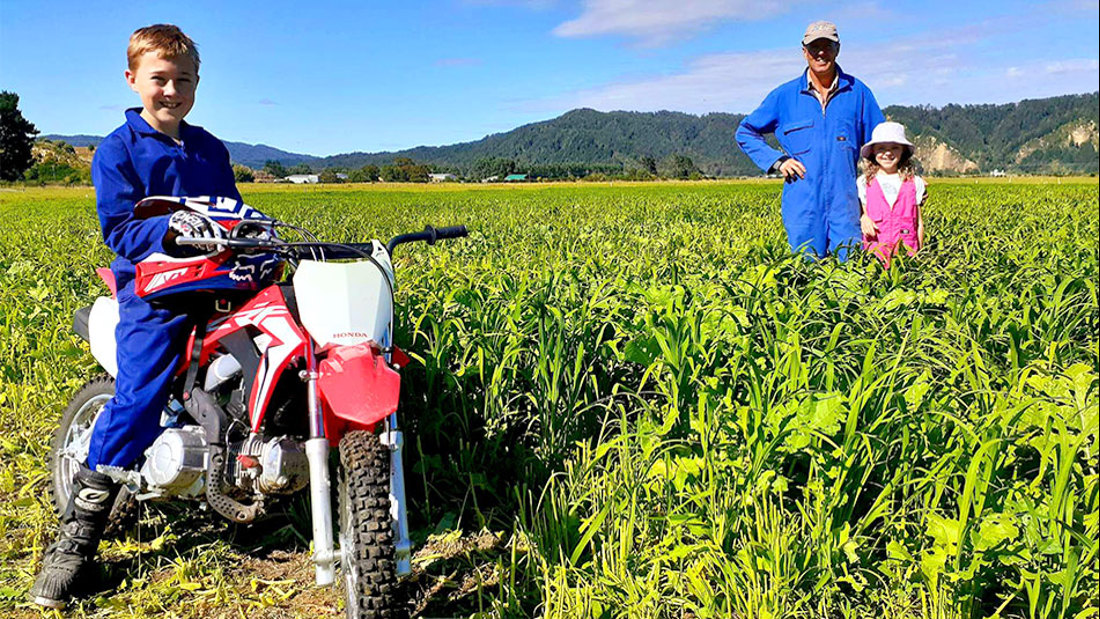
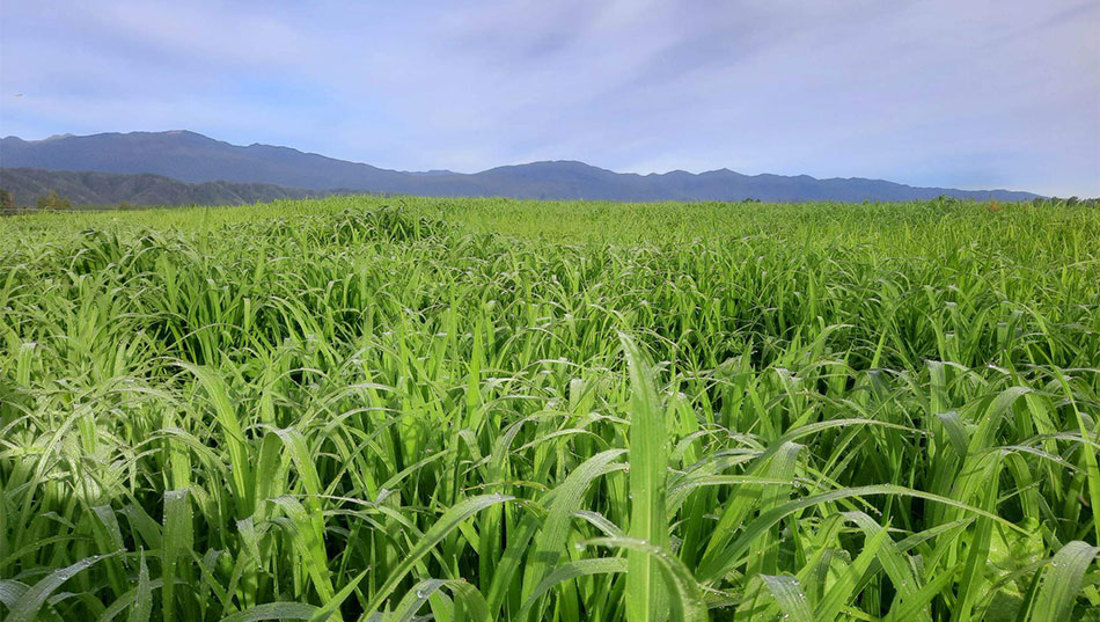
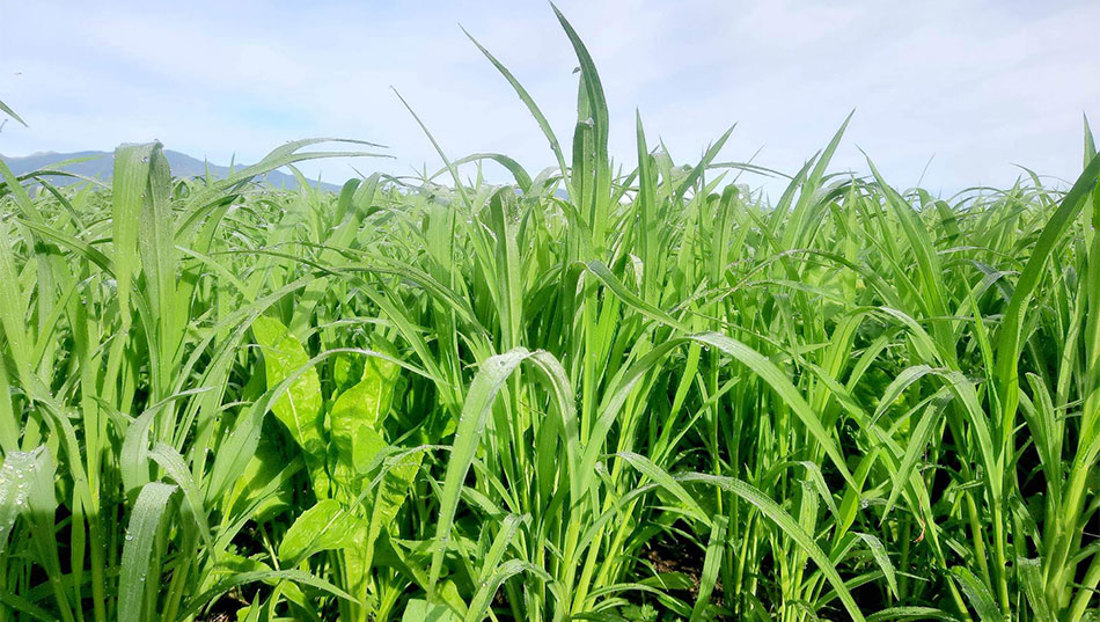
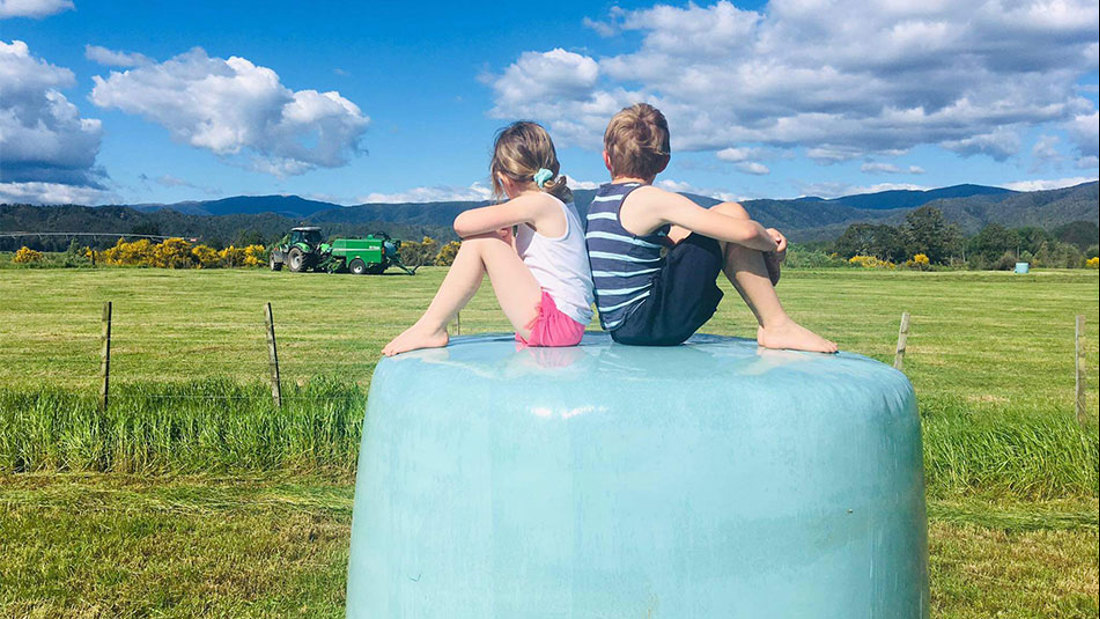
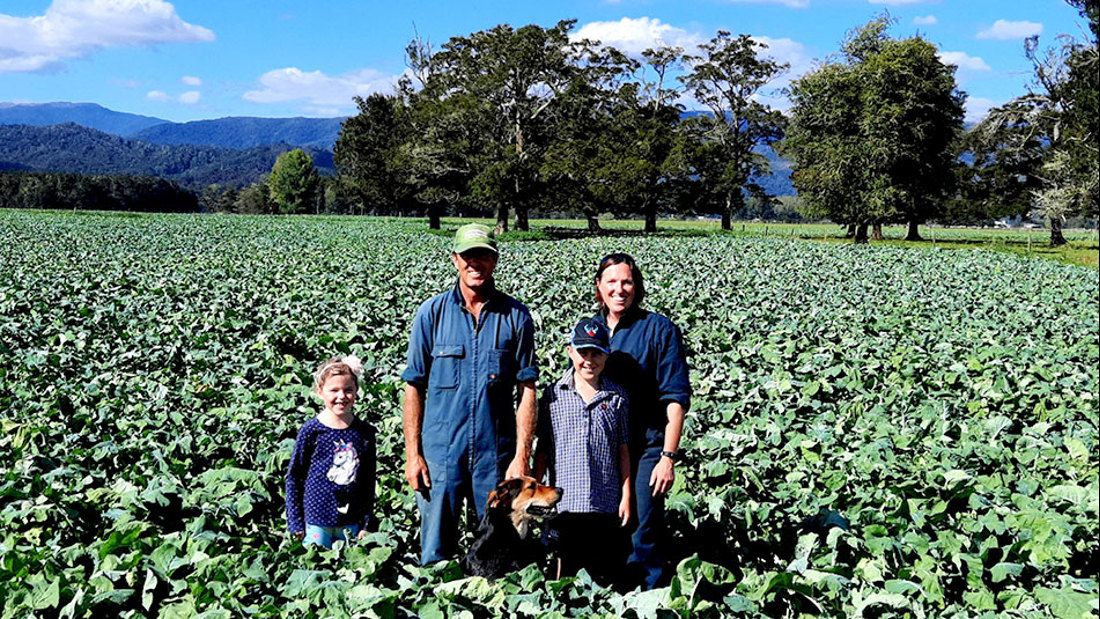
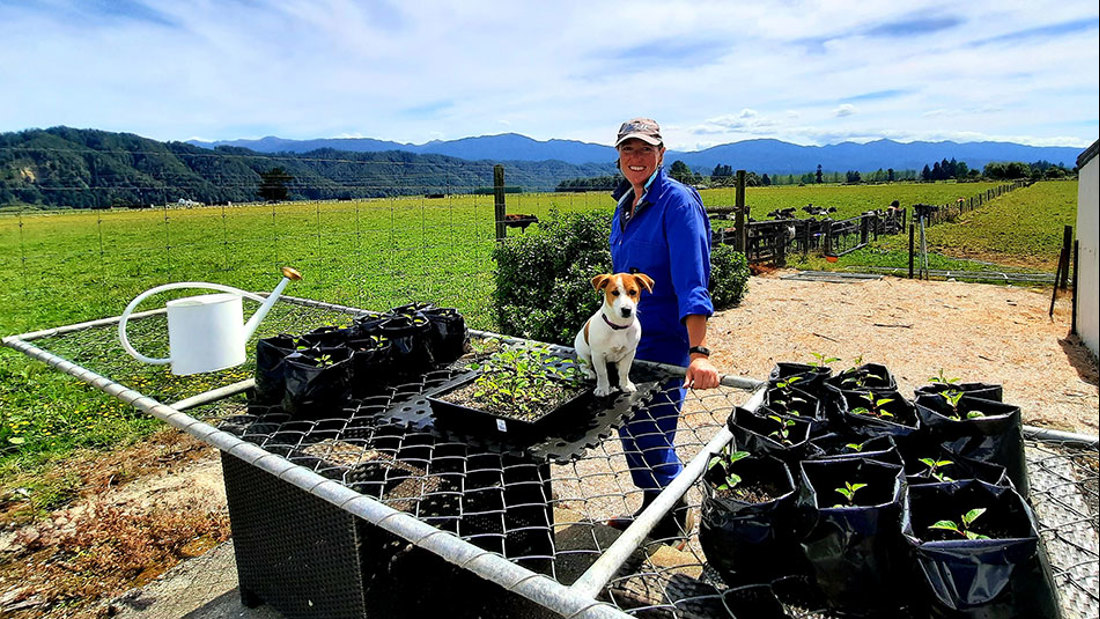
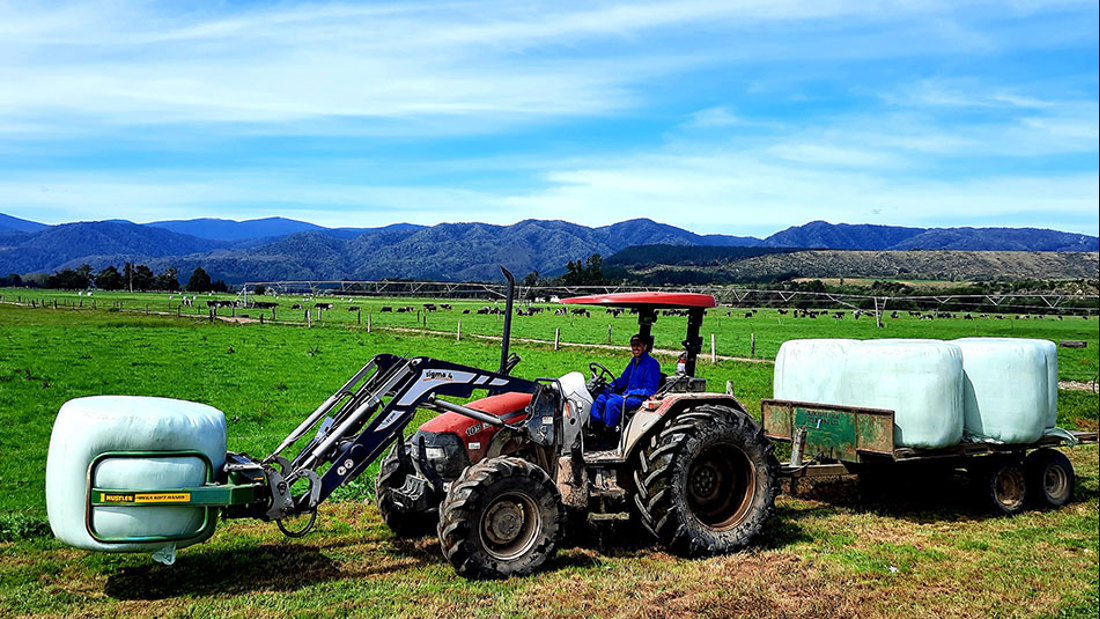
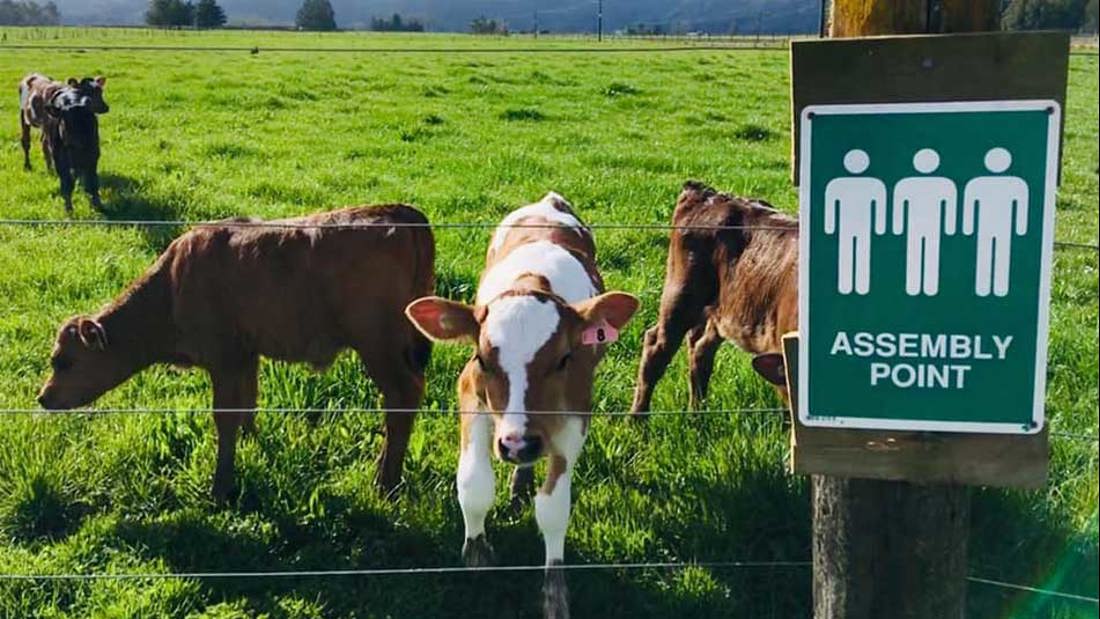
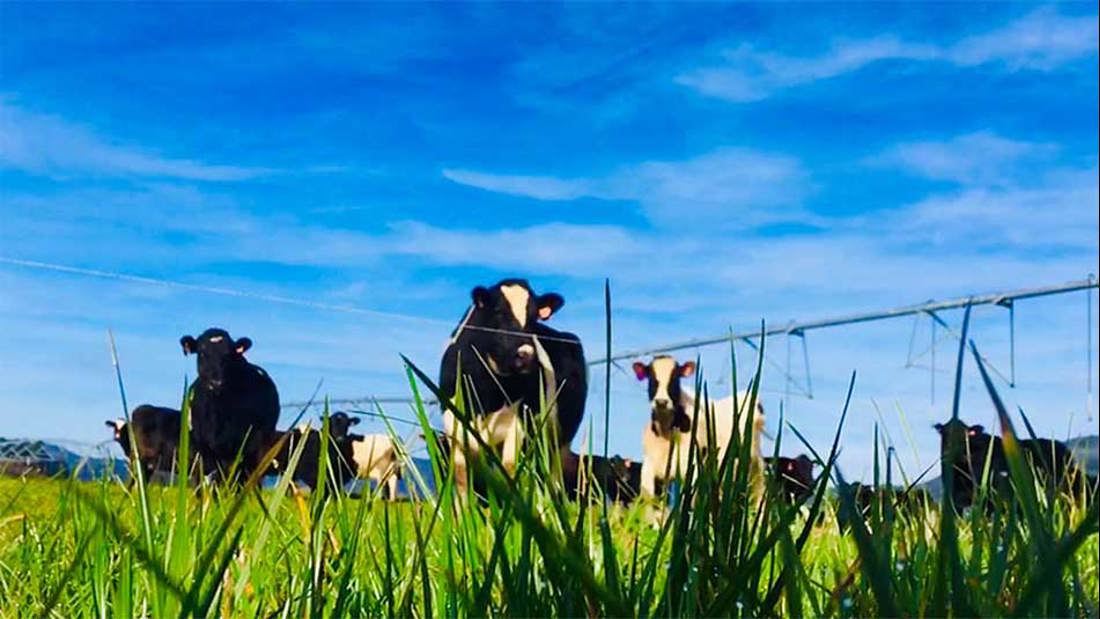
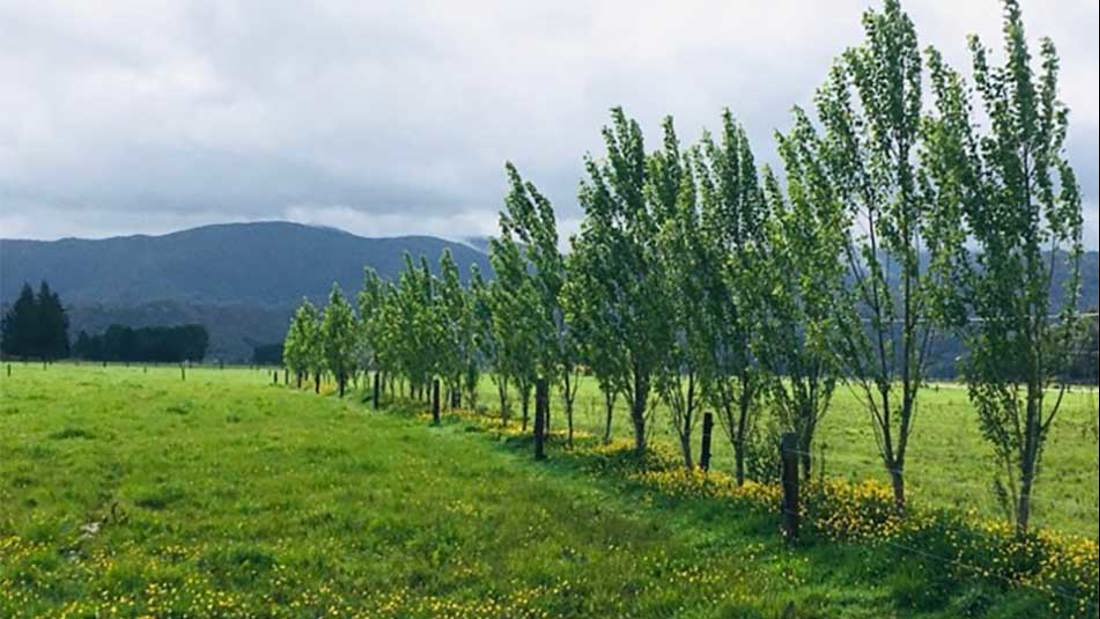
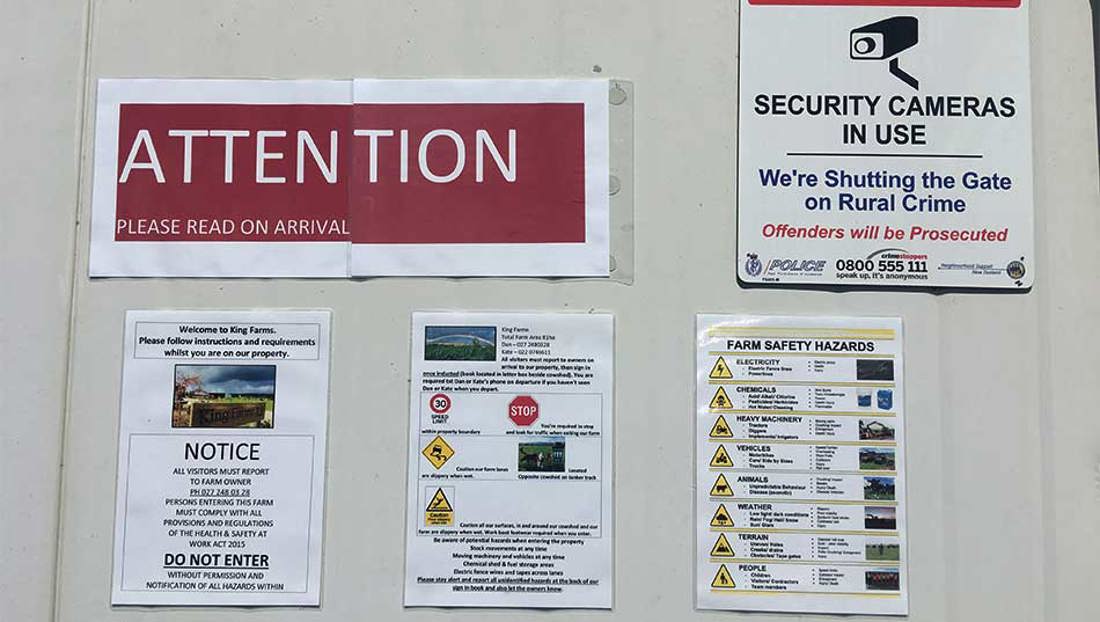
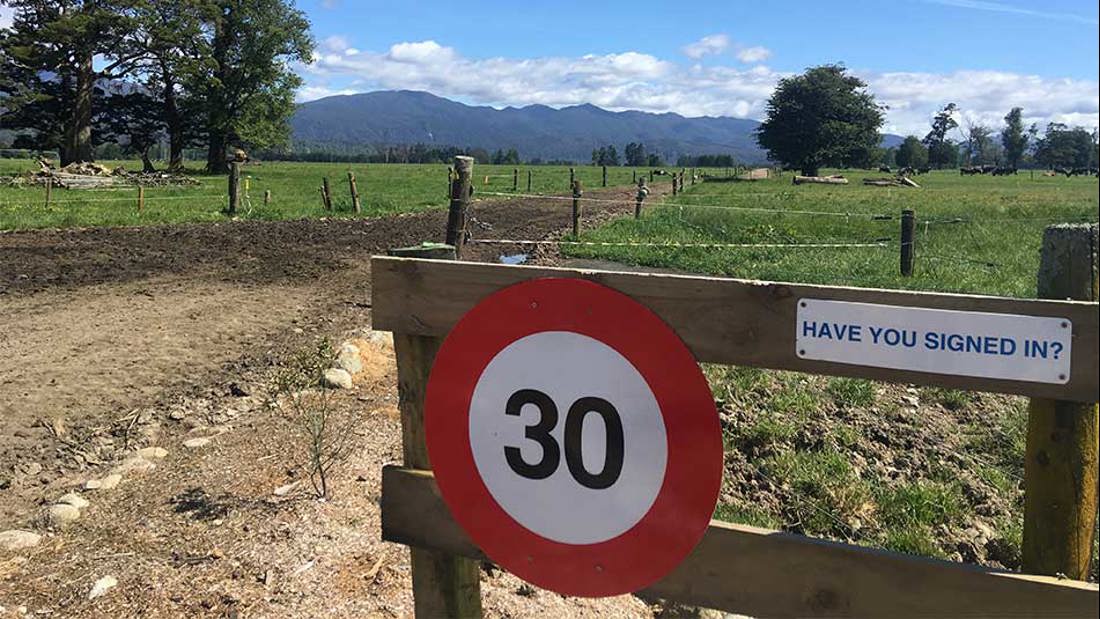
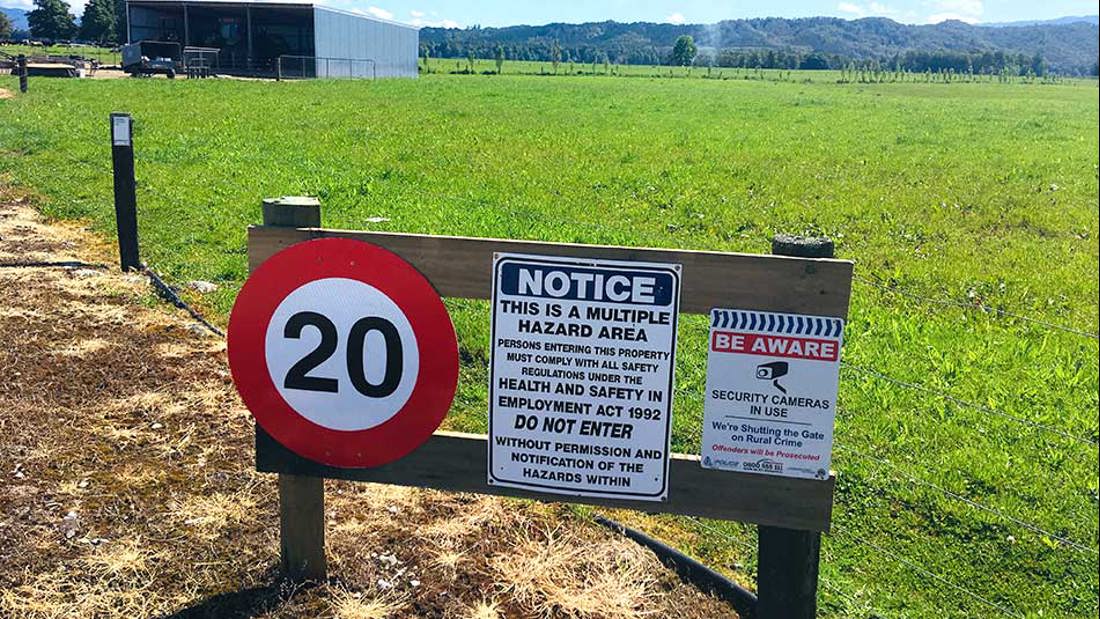
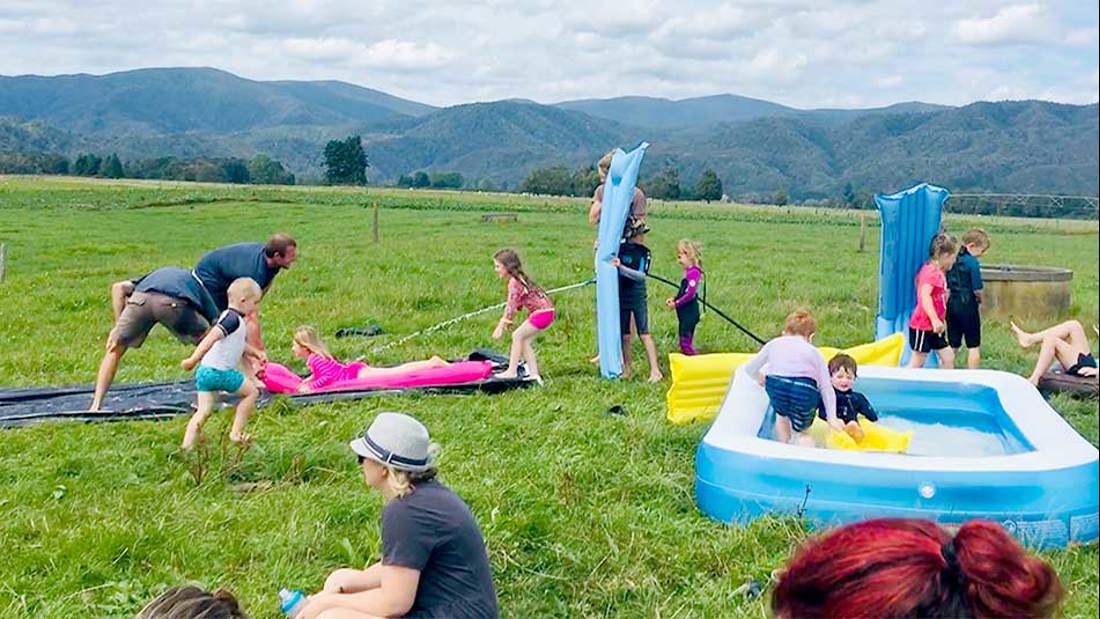
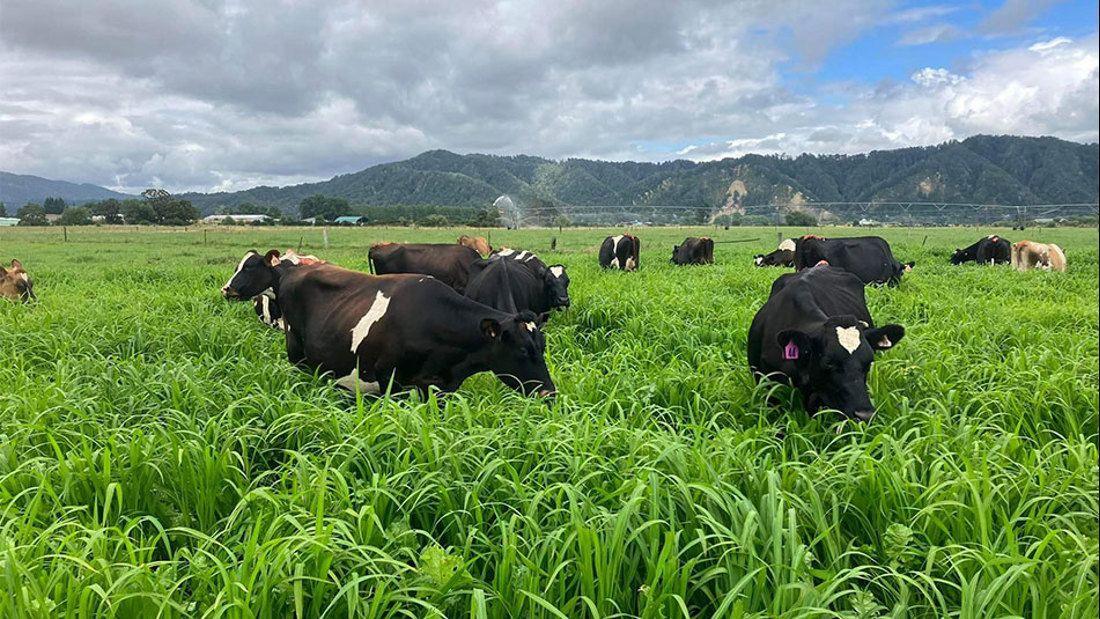
Business type:
Owner-operator
Location:
Reefton, Buller district
Farm size:
74 ha effective milking platform
Farm size (inclusion):
4.3 ha across a creek mainly used for young stock and some dry cow grazing
Peak cows:
151 Friesian cross
PSC:
1/08/2024
Stocking rate:
2.4 cows equivalents/ha including all young stock on farm
Production:
70,400kg kgMS/year, Actual 24-25, (951 kgMS/ha, 466 kgMS/cow)
Production: (2 year average)
983 kgMS/ha and 485kgMS/cow
Farm system:
4 (21-30% feed imported) for 2023-24
Wintering system:
All MA cows and in-calf heifers are wintered on the farm
Irrigation:
27 ha, (37% of the total effective farm area of 74 ha), centre pivot irrigation system
Soil Type:
Ikamatua silt loam
| Financial KPI 2024-25 budget updated February 2025 | |||
| Net dairy cash income ($/kgMS) |
Total farm working expenses ($/kgMS) |
Total operating expenses ($/kgMS) |
Dairy operating profit ($/ha) |
| $10.03 | $4.30 | $6.14 | $3,700 |
| Physical KPI 2023-24 Est |
|||
| Pasture and crop harvested (t DM/ha) |
Purchased N surplus (kg N/ha/yr) |
GHG (t CO2 equiv/ha/yr) |
Six week in-calf rate (%) |
| 12 | 139 | 7.4 | 71 |
Find out more about these KPIs and how to calculate them for your own farm here.
Numbers at a glance
View/download PDF of updated budget
| Financial KPI's | Budget | Updated forecast |
| Milk Production (kgMS/ha) | 982 | 951 |
| Milk Production (kgMS/cow) | 481 | 466 |
| Net Dairy Cash Income ($/kgMS) | $9.23 | $10.25 |
| Total Farm Working Expenses ($/kgMS) | $4.06 | $4.35 |
| Cash Operating Surplus/Deficit ($/kgMS) | $5.17 | $5.90 |
| Gross Farm Revenue ($/kgMS) | $9.30 | $10.13 |
| Operating Expenses ($/kgMS) | $5.83 | $6.11 |
| Operating Profit ($/ha) | $3,415 | $3,822 |
Comments and points of interest
Key Points
Comments
With the very dry February and March the herd went to once a day milking at the end of March.
Cows were progressively culled or dried off from mid-April with about 110 cows still milking in early May.
The last of the herd, (48 fat or late calving cows), were dried off at the end of May.
Current situation 23-5-2025
Pasture cover was over 2400 kg DM/ha with growth rates that week of about 35 kg DM/ha/day (15 kg DM/ha above on normal).
Cow condition at the beginning of May was 4.3 but has been improving since then and is good for this time of year.
The dry cows have just started grazing the swedes. This year’s crop yields have been estimated at over 20 t DM/ha, (measurements taken in 20th April were at 18.5-19.3 t DM/ha).
The farm is well set up for the next season.
Update June 11th – it is getting a little wet now but nothing unusual for the farm at this time of year.
Strategy and financial
Farm policy and infrastructure
Feed
Pasture management
Imported feed
Supplements
Cropping
Irrigation
Herd
Mating and reproduction
Young stock
People, health and safety
Environment
Best practice
Irrigation
Fertiliser and nitrogen
Wintering practices
Soil testing
Effluent
Riparian planting
Budget revision following milk payout drop
Overview
Managing our budgets well in the good years means we are set up for the bad. We are in a better position to ride out this downturn, which could last for more than a year or two. Lower debt, good current cash reserves, a history of tight control on expenditure, and regularly taking time out from farming to have fun without spending money give us the confidence to face this current situation. Things we have done already or considered are:
What advice would you give to farmers who are either first time sharemilking or farm owners?
Taking control by updating your budgets, knowing your numbers and asking for help can give you a lot of peace of mind.
The industry has lots of support networks so, don’t be afraid to ask for help. Don’t let financial pressures affect your mental health.
What words of positivity would you give to farmers planning for the coming months ahead?
You and your family are number one in your business so look for strategies that keep you all well, happy, and safe.
Get all the information you can for your farm and use it to be more efficient with using your resources.
Budget updated February 2025
| INCOME | $TOTAL | $/KgMS | $/COW | $/HA |
| Net Milk Sales
The revised budget is prepared on an advance milk price of $8.37 per kg MS for 69,800 kg MS, (down on the original budget of 72,700 kgMS). The milk price is based on 85% of the January updated forecast milk price being paid out by May 2025). Deferred income is the actual final payout announced September 2024 of $1.22/kg MS over 74,146 kg MS. **This milk income is the farmers best estimate of their likely net milk sales. It may or may not be out of date based on new information from dairy companies. It does not necessarily reflect DairyNZs milk price forecast.
|
672,300 | 9.63 | 4,452 | 9,085 |
| Net Dairy Livestock Sales
Based on the sale of 28 cull cows and R2 heifers @ $850/head, 100 bobby calves @$30/head, 6 bulls @ $1,900 /head less the purchase of 6 bulls @ $1,900/head. Prices are well up on the original budget.
|
27,700 | 0.40 | 183 | 374 |
| Other Dairy Cash Income | ||||
| NET DAIRY CASH INCOME | 700,000 | 10.03 | 4,636 | 9,459 |
| EXPENSES | $TOTAL | $/KgMS | $/COW | $/HA |
| Wages(incl. ACC)
Permanent relief staff for 400 hours, (more or less), per year equating to 0.17 FTE.
|
19,400 | 0.28 | 128 | 262 |
| Animal health
Animal health philosophy is to be very observant, keep good records and be pro-active, with much of the costs being for preventative rather than remedial treatments. Mineral supplements are provided via inline water supplementation. At risk cows are monitored post calving, (difficult calving or retained membranes), these cows are metrichecked once or twice prior to mating and treated as appropriate, (no cows have needed treatment for the last 2 years). The average SCC is under 150,000. In-calf heifers are teat sealed in June.
|
13,600 | 0.19 | 90 | 184 |
| Breeding and herd improvement
This covers 3 weeks of AB using Premiere sires forward pack for the majority of the herd and yearling heifers. Lower PW/BW cows will be mated to short gestation beef semen in the first week of AB and then short gestation dairy semen for the remaining 2 weeks. 6 Jersey bulls will be purchased to run with the herd and the heifers for 6 weeks. The bulls will be removed on January 1st and 2 weeks of AB using short gestation length semen will follow. No anoestous treatments are planned for the 2024-25 season. Herd testing is done 4 times a year. Includes pregnancy testing with the vet.
|
10,500 | 0.15 | 70 | 142 |
| Farm dairy
Covers all rubberware, detergents and consumables and milking machine testing for the 20 a-side herringbone shed. Standard recommended cleaning procedures are used.
|
3,000 | 0.04 | 20 | 41 |
| Electricity(farm dairy, water supply)
The plan is to go to 3 milkings in 2 days when the cows get to 1.8 MS/cow/day in late January and then OAD at 1.5 MS/cow/day in April, but the timing is weather dependent.
|
14,400 | 0.21 | 95 | 195 |
| Supplements made(incl. Contractors)
This covered contractors making about 180 bales of silage, (36 t DM), baling and wrapping only, (about $35/bale).
|
6,300 | 0.09 | 42 | 85 |
| Supplements purchased
Includes $66,600 for PKE, (160 t @ $416/t landed). $12,600 has been spent on 138 large bales of hay for use during the winter at $90/ bale landed.
|
79,200 | 1.13 | 525 | 1,070 |
| Calf rearing
32 replacement heifers have been reared this season. Calves are reared on colostrum, whole milk, meal/starter muesli while in pens then pasture only. Calves are weaned off milk at 85-90 kg for small framed crossbred animals and 95-100 kg for larger framed cross bred calves. Costs include about 10 bags of meal plus equipment.
|
1,600 | 0.02 | 11 | 22 |
| Young and drystock grazing
All young stock are carried on farm. For 2024-25 this will be 30 yearlings and 32 weaners.
|
0 | 0.00 | 0 | 0 |
| Winter grazing
Cows and in calf heifers are all wintered on the 74 ha platform.
|
0 | 0.00 | 0 | 0 |
| Fertiliser(incl. N)
This is net of fertiliser rebates. Fertiliser is applied as per fertiliser company recommendations and are in line with best practice guidelines for the region and soil types. Paddocks with Olsen P levels above the optimum range will not receive any phosphate. All fertiliser is spread with own gear. Products used are Ammo31/36, Ureammopot, and a mix of Cropmaster DAP/Pot Chloride/Ammonium Sulphate. Farm fertility is high, (Olsen P are in the range of 34-50).
|
46,900 | 0.67 | 311 | 634 |
| Irrigation
Irrigation is used on 27 ha, over a 6 weeks period each year, between January and March. For the last 3 years the average number of days irrigation is used is about 25. Cost is for electricity for pumping water from the nearby creek and running the centre pivot irrigation. Daily running costs are about $150 per day, plus overheads.
|
6,700 | 0.10 | 44 | 91 |
| Regrassing & cropping
There have been 3.8 ha winter crop, (swedes), planted late spring. The previous winter crop area, (4.0 ha swedes + 1.8 ha pasture used in conjunction with feeding off the swedes), were planted in Japanese millet in late November/early December. This area will be planted in a short rotation ryegrass (SRR), in the early autumn. The cropping cost also allows for some repair of SRR pasture that may not be performing but aren't in line for cropping. This cost includes weed and pest control.
|
19,100 | 0.27 | 126 | 258 |
| Weed and pest
Pasture weed control is mainly spot spraying scotch thistles and ragwort.
|
2,000 | 0.03 | 13 | 27 |
| Vehicles & fuel
Vehicles and machinery are kept clean and maintained regularly. Includes $10,600 for fuel. Care is taken to minimise damage, tractor hours per year are medium to low. Feeding PKE takes 5-10 minutes per day.
|
25,100 | 0.36 | 166 | 339 |
| R&M(land, buildings, plant, machinery)
Farm buildings and infrastructure are in very good order so very little maintenance is planned for 2024-25. Includes about $3,000 for upgrading the race near the cowshed entrance and exit.
|
8,900 | 0.13 | 59 | 120 |
| Freight and general farm expenses
Includes dog related expenses, protective clothing, general freight and bio-security levy.
|
3,900 | 0.06 | 26 | 53 |
| Administration
Do all own GST, pay roll and budgeting. Includes accountant's fees, computer consumables, subscriptions and communications costs.
|
12,900 | 0.18 | 85 | 174 |
| Insurance
This has increased on the previous year. The farms insurance cover is reviewed regularly to ensure it continues to be relevant and cost effective.
|
13,500 | 0.19 | 89 | 182 |
| ACC
Similar to last year.
|
4,000 | 0.06 | 26 | 54 |
| Rates
As per rates demand. Up 30+% on previous season.
|
9,000 | 0.13 | 60 | 122 |
| TOTAL FARM WORKING EXPENSES | 300,000 | 4.30 | 1,987 | 4,054 |
| CASH OPERATING SURPLUS | 400,000 | 5.73 | 2,649 | 5,405 |
Non-cash adjustments have been included below the cash analysis to enable fairer comparisons to be made between farms. These adjustments are not part of a cash budget but are important to fully understand the efficiency of the farm business.
| $TOTAL | $/KgMS | $/COW | $/HA | |
| Value of change in Dairy livestock
Expect to have 2 more R 1 heifers, 5 fewer R 2 heifers and 5 more MA cows. 2024 IRD NAMV used to value the change in livestock numbers.
|
2,300 | 0.03 | 15 | 31 |
| Labour adjustment
This is for 1.4 Full time equivalent unpaid shareholder input.
|
91,500 | 1.31 | 606 | 1,236 |
| Feed inventory adjustment
Expect to have no significant change in feed on hand for the year.
|
0 | 0.00 | 0 | 0 |
| Depreciation
Based on the previous years depreciation and adjusted for subsequent planned asset purchases and sales.
|
37,100 | 0.53 | 245 | 500 |
| DAIRY GROSS FARM REVENUE | 702,300 | 10.06 | 4,651 | 9,491 |
| DAIRY OPERATING EXPENSES | 428,500 | 6.14 | 2,838 | 5,791 |
| DAIRY OPERATING PROFIT | 273,800 | 3.92 | 1,813 | 3,700 |
2024-25 mid-season update
| Financial KPI's | Budget | Updated forecast |
| Milk Production (kgMS/ha) | 982 | 943 |
| Milk Production (kgMS/cow) | 481 | 462 |
| Net Dairy Cash Income ($/kgMS) | $9.23 | $10.03 |
| Total Farm Working Expenses ($/kgMS) | $4.06 | $4.30 |
| Cash Operating Surplus/Deficit ($/kgMS) | $5.17 | $5.73 |
| Gross Farm Revenue ($/kgMS) | $9.30 | $10.06 |
| Operating Expenses ($/kgMS) | $5.83 | $6.14 |
| Operating Profit ($/ha) | $3,415 | $3,700 |
Click here to view PDF of updated budget
Key Points
Comments
Production to the end of January is 49,941 kg MS which is 2.5% down on last season, and budget. The number of cows milked at the peak was 151 which is similar to last season and budget.
The planned start of calving was 3 days later than last season so August production was behind last year – this has also contributed to the lower milksolids.
Rainfall for the 7 months from 1st June 2023 is 1,343 mm, (45% higher than last season’s 929 mm). June and July were relatively dry but from then on it was persistently wet which has made farming challenging.
With the better winter the herd body condition score at calving was very good – 5+, which did help through the following wet months.
The herd peaked in late September at 2.3 kgMS/cow/day which was a month earlier than the previous year and indicative of how flat the milk production curve was through September and October.
To mitigate the impact of poor pasture utilisation because of the wet soil conditions in late September/early October, the herd was being fed daily, 3-4 kgMD PKE in troughs and 1.5-2.5 kg MD of baleage in paddock along with about 12-13 kg DM of pasture. For comparison at peak in October last season the herd was producing 2.4 kgMS/c/day, from 20 kg DM/c/day (18 kgDM pasture and 2 kg DM PKE).
Supplements fed to date are 128 t DM which is up about 6 t DM on last season. This equates to about 847 kg DM/cow or 1.7 T DM/ha. The amount fed is similar to the previous season but this season there were fewer young stock on farm so supplement fed per stock unit is up.
Late November-early December, swedes have been planted on 3.8 ha, (two paddocks), of the effluent area for next winter.
Last winter’s swede crop was cultivated and drilled with Japanese millet in late November, and additional 1.8 ha was also planted for a total of 5.8 ha. The crop is planted on the effluent area to take advantage of the irrigation.
Grazing started January 13th, a bit later than ideal due to time off farm, so 3.9 ha was made into cereal baleage. The crop will be grazed on a 3 week rotation to maintain quality and should provide 4-5 grazing’s up to the middle of April, when it will be planted in short rotation ryegrass.
Supplements made to date are 180 bales of baleage from 21.8 ha, 134 is pasture baleage and 46 are millet.
It has been dry though January and early February and the irrigator has been running for 32 days. The average for the farm is 21 days and last season it was only run for 9 days
Nitrogen applications were delayed until October as pasture cover was high through June and July and soil condition too wet until October. Nitrogen applied to date is 59 kg N/ha, slightly less than last year. Another one to two applications will go on in the autumn if needed so the total for the year will likely be slightly under the budget of 110 kgN/ha.
All spring fertiliser is on. Fertiliser applications have been tailored to each paddock with phosphate only being applied to paddocks with OlsenP levels at optimum or below.
Current situation
There are currently 147 cows milking, still all on twice a day, (2 more than the same time last year). Per cow production is 1.6 kgMS/cow/day which is 4% behind last season. The herd is currently being fed about 17.5 kg DM/c/day made up of 8 kg DM of pasture and 4.5 kg DM/c/d of PKE and 3.5 kgDM/c/d of millet.
Milking frequency will change to 3 milkings in two days on February 10th.
With the dry conditions and less pasture available daily milk production is 2% behind last season based on the most recent 10 day comparison.
Cow condition is about 4.0 BCS which much lower than last year and a reflection of the tough spring.
Pasture cover is 1,830 kg DM/ha (excluding crop areas). This below target and well down on the same time last year. Pasture growth rates for the last week has been averaging about 15 kgDM/ha/day, (including the irrigated areas). At this level cover is dropping so supplementation with increase this week with baleage being fed as required.
The grazing rotation is 27 day, (18-20 days on irrigated pasture and 30-35 on the non irrigated).
The 32 weaners are grazed one day ahead of the milking herd and the 30 rising 2 year olds are following one day behind the cows to clean up some of the higher residuals. Both are being supplemented.
Looking forward
The plan is to continue with 3 in 2 milking frequency and feeding PKE and baleage as required, along with the millet, (till mid-April). If it remains dry more PKE could be purchased.
Once a day milking will be used later in the season.
The farm responds quickly to moisture so usually autumn pasture growths are reliable.
The plan is to still milk through to mid to late May with as long as pasture growth rates permit.
Calving and reproduction
Other points of interest
2024-25 early season update
| Financial KPI's | Budget | Updated forecast |
| Milk Production (kgMS/ha) | 982 | 982 |
| Milk Production (kgMS/cow) | 481 | 481 |
| Net Dairy Cash Income ($/kgMS) | $8.63 | $9.23 |
| Total Farm Working Expenses ($/kgMS) | $3.96 | $4.06 |
| Cash Operating Surplus/Deficit ($/kgMS) | $4.76 | $5.17 |
| Gross Farm Revenue ($/kgMS) | $8.69 | $9.30 |
| Operating Expenses ($/kgMS) | $5.72 | $5.83 |
| Operating Profit ($/ha) | $2,909 | $3,415 |
Click here to view PDF of updated budget
Key Points
Other points of interest
2023-24 Season review
| Financial KPI's | Budget | Actuals |
| Milk Production (kgMS/ha) | 959 | 982 |
| Milk Production (kgMS/cow) | 458 | 488 |
| Net Dairy Cash Income ($/kgMS) | $7.26 | $8.01 |
| Total Farm Working Expenses ($/kgMS) | $4.52 | $4.21 |
| Cash Operating Surplus/Deficit ($/kgMS) | $2.74 | $3.81 |
| Gross Farm Revenue ($/kgMS) | $7.15 | $7.83 |
| Operating Expenses ($/kgMS) | $6.10 | $5.64 |
| Operating Profit ($/ha) | $1,009 | $2,147 |
Click here to view PDF of budget v actuals
Key Points
Other points of interest
Farm working expenses are forecast to be about $4.21/kg MS, (about $15,000 or 5%, below budget) and operating expenses are expected to be about $5.64/kg MS.
Savings have come from
Nitrogen use for the year is 105 kg N per ha, just slightly down on the budget of 110kg/n/ha.
Reproductive performance for the herd was slightly improved on the previous year with a six week in calf rate estimated at 71% and an empty rate of 9%.
The herd went to 16 hour milking late January and the once a day mid-April while still producing 1.5 kgMS/cow/day. All culls were off the farm by late April
There are currently still 123 cows milking and the feed budget indicates that the herd will be all dry by the end of May. This could be brought forward if pasture growth slows significantly or it is likely to get wet, (to avoid having freshly dried off cows trying to lie down in mud).
The farm cover is currently 2,100 kgDM/ha and cow condition is good. There will be 84.5 t DM to take through to next season along with 4.0 ha of swedes for the winter.
2021-22 Season review
| Financial KPI's* | Budget | Actual |
| Milk Production (kgMS/ha) | 963 | 944 |
| Milk Production (kgMS/cow) | 465 | 456 |
| Net Dairy Cash Income ($/kgMS) | $8.59 | $9.93 |
| Total Farm Working Expenses ($/kgMS) | $4.45 | $4.70 |
| Cash Operating Surplus/Deficit ($/kgMS) | $4.14 | $5.23 |
| Gross Farm Revenue ($/kgMS) | $8.53 | $9.63 |
| Operating Expenses ($/kgMS) | $5.92 | $6.25 |
| Operating Profit ($/ha) | $2,517 | $3,187 |
*These KPI's are based on cash book actuals to 31 May 2022 and estimated non-cash adjustments. The final financial performance based on financial statements may differ.
Click here for PDF of 2021-22 budget v actuals
Want to see how the top operators are spending their money? Are there areas for improvement in your own business where savings can be made? We’ve collected in-depth current season budgets from a number of top performing farms with a focus on lower ‘per unit’ cost of production to help you identify opportunities.
Now’s the perfect time to check in, plan, and set up for a strong season. We’ve pulled together smart tips and tools to help you stay ahead all winter long.
Whether you prefer to read, listen, or download handy guides, we’ve got you covered with trusted tools to support your journey every step of the way.